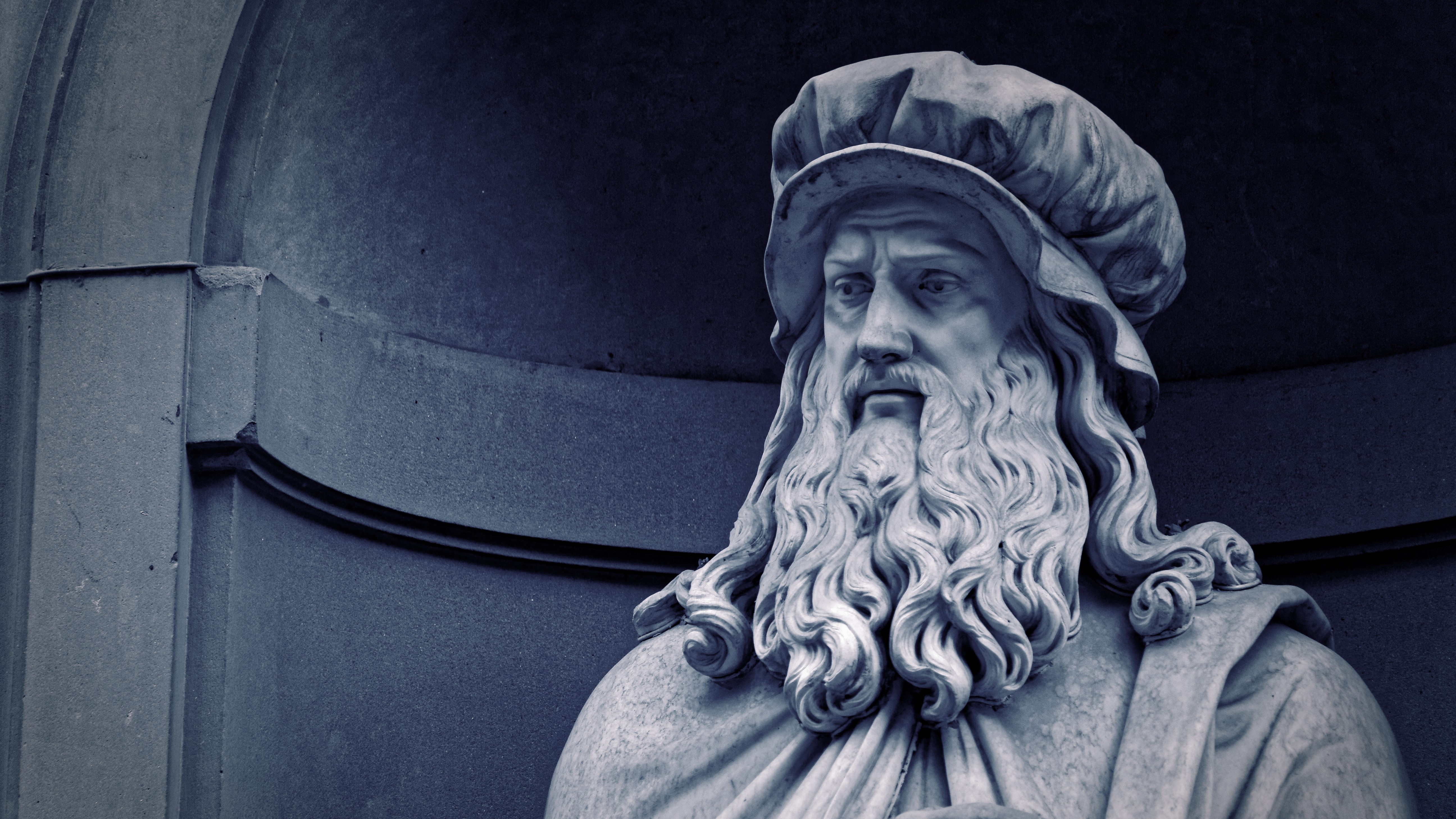Da Vinci understood key aspect of gravity centuries before Einstein, lost sketches reveal
Sketches found inside Leonardo da Vinci's sketchbooks, show that he had already grasped the essence of Einstein’s 1907 ‘Equivalence Principle’ centuries before the physicist.

Leonardo da Vinci may have had an understanding of gravity that was "centuries ahead of his time," his sketchbooks reveal.
Da Vinci's sketches, which were forgotten for decades, show triangles formed by sand-like particles pouring from a jar. These falling grains depicted experiments to show that gravity was a form of acceleration more than 400 years before Einstein did, a new study argues.
Albert Einstein first formulated the idea that the experience of being accelerated by gravity and being accelerated relative to a fixed frame of reference are indistinguishable, called the equivalence principle, in 1907. To do so, Einstein expanded upon ideas from Isaac Newton’s 1687 discovery of the universal law of gravitational attraction (which states every object in the universe attracts every other with a force linked to their masses and inversely related to the square of the distance separating them) and Galileo Galilei’s 1604 statement of the law of freefall (which states that without air resistance, all masses fall with the same acceleration).
Related: 8 ways you can see Einstein's theory of relativity in real life
"We don't know if da Vinci did further experiments or probed this question more deeply," lead-author Mory Gharib, a professor of aeronautics and medical engineering at Caltech, said in a statement. "But the fact that he was grappling with this problem in this way — in the early 1500s — demonstrates just how far ahead his thinking was."
Da Vinci was a painter, architect, inventor, anatomist, engineer and scientist. Primarily self-educated, he filled dozens of secret notebooks with fanciful inventions and anatomical observations. Along with detailed drawings of human anatomy, his notebooks contain designs for bicycles, helicopters, tanks and airplanes. Of the more than 13,000 pages of these sketches that were later collected into codices, less than a third have survived.
Gharib was poring over the digitizied copies of these notebooks to discuss da Vinci’s studies of flow dynamics with his students when he noticed the sketches in the pages of the Codex Arundel — a notebook dating to between 1480 and 1518. There he saw the triangles formed by particles pouring from moving jars, which were accompanied by an intriguing phrase written in da Vinci’s mirrored handwriting.
Get the world’s most fascinating discoveries delivered straight to your inbox.

"What caught my eye was when he wrote ‘Equatione di Moti' [translated by the researchers as "equivalence of motions"] on the hypotenuse of one of his sketched triangles — the one that was an isosceles right triangle," Gharib said. "I became interested to see what Leonardo meant by that phrase."
Gharib and his colleagues discovered that da Vinci was describing water or sand being dumped from a pitcher as it moved along a straight path parallel to the ground. Da Vinci’s notes make it clear that he knew the particles would accelerate downwards, and that once they had left the pitcher, this acceleration was only caused by gravity.
If the pitcher moved at a constant rate, the line traced out by the falling particles would be vertical, da Vinci reasoned, but if it accelerated at a constant rate, then the particles make a straight but slanted line that forms the hypotenuse side of a triangle.
In fact, da Vinci observed, if the jug accelerates to release the drips at the same rate that gravity accelerates them towards the ground, an equilateral triangle is traced out — the first hint of the equivalence principle at play.

Da Vinci tried to formulate his observations into an equation, but abandoned the attempt. By running a simulation of his experiment, the researchers found where he went astray.
"What we saw is that Leonardo wrestled with this, but he modeled it as the falling object's distance [from the object’s dropping point] was proportional to 2 to the t power [with t representing time] instead proportional to t squared," co-author Chris Roh, a professor of biological and environmental engineering at Cornell University, said in the statement. "It's wrong, but we later found out that he used this sort of wrong equation in the correct way."
The findings were published Nov 28, 2022. in the journal Leonardo.

Ben Turner is a U.K. based staff writer at Live Science. He covers physics and astronomy, among other topics like tech and climate change. He graduated from University College London with a degree in particle physics before training as a journalist. When he's not writing, Ben enjoys reading literature, playing the guitar and embarrassing himself with chess.
